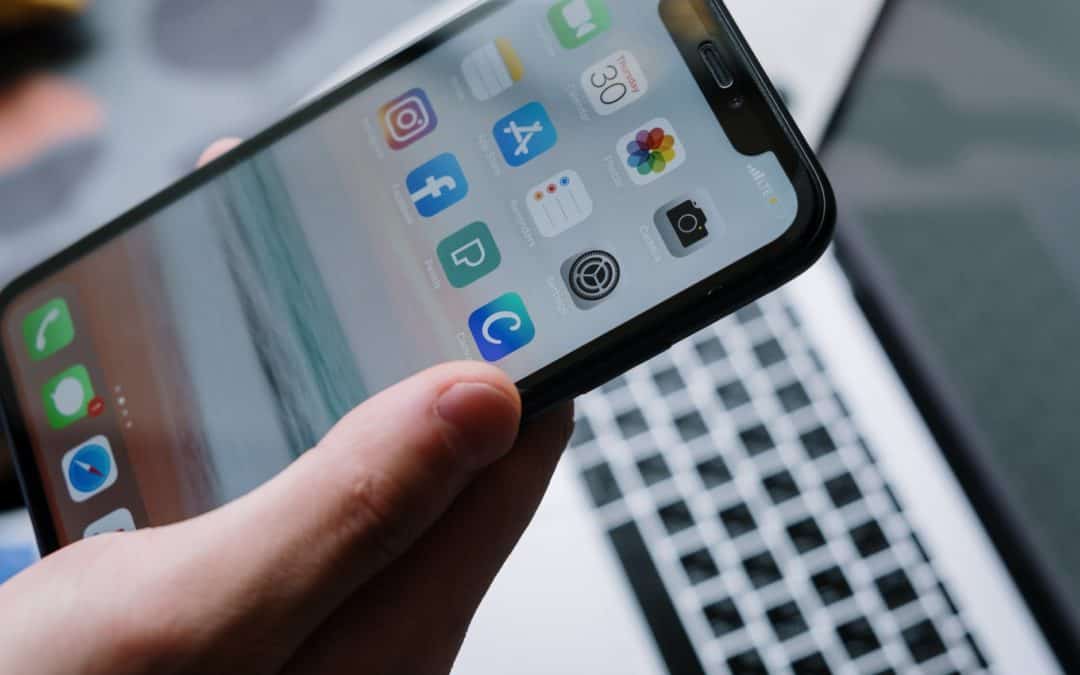
Unlock the Secrets of Advertising in Wollongong
Understanding the Business Landscape in Wollongong
Wollongong, colloquially known as “The Gong,” is a city that combines the sea’s beauty with a buzzing industrial environment and a vibrant small business ecosystem. Given its unique economic landscape, understanding the city’s business terrain can provide valuable insights to shape your marketing and business strategies.
Industry Strengths
Wollongong has a diverse economic base, boasting strengths in sectors such as manufacturing, ICT, logistics, health, and education. The city has been the birthplace of significant industries and continues to attract new business sectors with its strategic location, state-of-the-art infrastructure, and skilled workforce. As part of your advertising approach, it’s crucial to identify these industries’ needs and align your marketing message to meet them effectively.
Economic Indicators
Understanding economic indicators such as unemployment rates, gross regional product, population growth, and property prices is crucial to comprehend the city’s economic health. These figures provide a broader context for your business operations and can offer hints about potential customers’ purchasing power and business growth opportunities.
Market Trends
Keeping an eye on market trends in Wollongong is essential to stay competitive and informed. Changes in consumer behavior, advancements in technology, demographic shifts, or shifts in the regulatory environment can significantly impact your business. Being aware of these trends can aid in predicting future movement, allowing you to be proactive and reactive in your marketing strategies.
Business Growth Factors
Several factors contribute to business growth in Wollongong. The city enjoys a robust transport network, excellent educational institutions, and a strong commitment to innovation and entrepreneurship, attracting businesses and individuals alike. A deep understanding of these factors can help you better position your advertising to appeal to these strengths and tap into the growth they initiate.
Opportunities and Collaborations
Wollongong has many opportunities for business expansion and collaborations. The vibrant startup scene, combined with the presence of well-established industries and close proximity to Sydney, presents a high potential for partnerships and innovation. Understanding these opportunities can help align your advertising strategies with the broader business goals and find collaborative avenues to expand your reach.
By fully grasping Wollongong’s business landscape, you can develop advertising campaigns that speak directly to the city’s unique characteristics, needs, and opportunities. Whether you’re targeting thriving industries, capitalizing on economic trends, or seeking collaboration, understanding Wollongong’s business environment is a key step in effective local advertising.
Target Audience Analysis in Wollongong
Understanding your target audience in Wollongong means dissecting a multitude of characteristics, behaviours, and attitudes that can influence buying decisions in this unique market. Here’s how each piece contributes to a comprehensive target audience analysis.
Demographic Data
An excellent starting point for target audience analysis is demographic data. In Wollongong, explore elements such as age, gender, income levels, employment status, education levels, and ethnic backgrounds. The city’s demographic profile can provide hints about which sectors of the population might find your products or services relevant.
For instance, Wollongong is known for its thriving university, which means a significant share of the population consists of students—this could indicate a potentially large market for affordable, convenience-oriented products and services.
Consumer Behavior Analysis
Understanding how consumers in Wollongong make buying decisions and interact with brands is crucial to tailoring your advertising message. This may include evaluating patterns in how consumers in Wollongong research and purchase products, the kinds of products or services that are popular, and emerging consumer trends.
For example, if consumers in Wollongong rely heavily on online reviews before making purchases, your advertising strategy might include investing in initiatives to build a strong online reputation.
Lifestyle Preferences
Lifestyle preferences can substantially impact consumer behaviour. These may encompass elements such as outdoor activities, cultural interests, health and wellness tendencies, and the importance placed on sustainability.
For example, Wollongong’s seaside location and abundance of outdoor recreational spots could mean a larger audience for health-focused, eco-friendly, or outdoor-related products or services.
Market Segmentation
A thorough target audience analysis also involves breaking down the larger market into sub-segments based on shared characteristics or preferences. This helps refine your advertising approach by enabling you to create tailored, personalised campaigns that resonate more strongly with each specific group.
For instance, you might segment your Wollongong audience into groups such as university students, young professionals, older workers in the manufacturing industry, retired individuals, or families, each of whom would likely respond to different advertising tactics.
Overall, understanding your target audience in Wollongong provides a roadmap to designing more effective advertising campaigns. By aligning your campaign with Wollongong consumers’ demographics, behavior, lifestyle preferences, and the specific needs of each market segment, you can craft compelling, relevant messages that speak directly to your audience’s unique traits and motivations.
Traditional Advertising Methods in Wollongong
Traditional advertising methods, while often seen as archaic in an increasingly digitalised world, retain a robust relevance in a market like Wollongong. These established methods continue to provide unique benefits, reaching extensive audiences and maintaining immense potential for brand building and engagement.
Print Media
While print media circulation has declined globally, it still holds value for local businesses in Wollongong. Newspaper adverts, whether on the local Illawarra Mercury or smaller community papers, can provide high visibility among residents. Print materials, such as brochures and flyers, can also have a high reach, especially in locations with high foot traffic.
The tangibility and perceived reliability of print often engender a level of trust that can enhance your brand image. By strategically integrating print into your marketing mix, you can amplify your campaigns’ reach and engagement.
Radio
Radio advertising remains a potent tool, reaching audiences in their cars, workplaces, or homes. Stations such as i98 FM and Wave FM serve Wollongong, giving businesses broad access to different audience segments. Radio’s strength lies in its ability to offer regular repetition of your message—an effective way to build brand recognition.
Television
Although many consumers are turning to streaming services, TV still commands a significant audience. TV commercials in regional markets like Wollongong can provide high visibility and impactful messaging by using sight, sound, and motion. It’s a platform that still holds sway, especially for products and services with a broad market appeal.
Billboards
Billboards remain a visible and effective form of outdoor advertising in Wollongong. Their ability to deliver high-impact visual messages along busy roads, retail areas, or near landmarks helps ensure your brand gets noticed. This constant presence can build awareness quickly, fostering brand familiarity and recall.
Direct Mail
Direct mail, with good targeting, can be cost-effective and surprisingly efficient in hitting the mark. Physical mail lends itself to personalisation and offers a tactile experience that can leave a strong impression. Despite the rise of inbox culture, well-crafted catalogues, postcards, or letters can still stand out and grab attention in a home’s letterbox.
Relevance in the Digital Age
Even though they’re sometimes perceived as old-school, these methods have unique strengths that make them relevant in the digital age. Traditional media outlets often have passionate, loyal audiences, and they can offer businesses credibility, broad access, and a tangible advertising experience that contrasts with the ephemeral nature of online content.
While the marketing world continues to lean toward digital, traditional advertising methods can not only coexist with these newer forms but can complement them. For businesses operating in Wollongong, utilising a blend of traditional and digital methods can ensure that all potential customer touchpoints are effectively covered. This integrated approach can engage audiences on multiple fronts, amplify your message, and bolster your chances of converting awareness into action.
The Power of Digital Advertising in Wollongong
Digital advertising is rapidly transforming the business landscape in Wollongong, enabling firms to achieve precise targeting, get real-time feedback, and generate impressive results often at a fraction of the cost of traditional methods. Here’s a closer look at the power of digital advertising in this market.
Search Engine Advertising
Search engine advertising, including platforms such as Google or Bing Ads, allows businesses in Wollongong to reach audiences actively searching for relevant keywords. Your advertisement’s visibility is determined by a combination of bidding, relevance, and quality, meaning even small businesses can reach potential consumers in a highly targeted manner. This method can yield impressive return-on-investment, as you are reaching consumers who are likely already interested in what you’re offering.
Social Media Ads
Social media platforms, such as Facebook, Instagram, LinkedIn, and Twitter, allow local businesses to target Wollongong audiences based on demographic attributes, interests, behaviours, and more. These platforms also support various types of content, including text, image, video, and interactive ads, providing the necessary flexibility to create engaging campaigns that resonate with your target audience.
Content Marketing
Content marketing offers a way to provide value to your audience and position your business as an expert in your industry. By creating and sharing blog posts, videos, infographics, webinars, and other types of content, you can attract, engage, and persuade customers in Wollongong. This approach can build trust and loyalty over time, leading to stronger customer relationships and a higher likelihood of conversions.
Resource 1: “Starting a Social Media Calendar”
Influencer Marketing
Influencer marketing leverages the reach and credibility of popular personalities or thought leaders across various digital platforms. Businesses can collaborate with influencers who resonate with their target audiences in Wollongong, using their authentic voice to increase brand awareness, drive engagement, and generate conversions.
Mobile Advertising
The widespread use of smartphones in Wollongong provides a powerful tool for reaching users with targeted mobile ads. From in-app ads to location-based promotions, mobile marketing has the potential to deliver personalised experiences that drive action.
Analytics
One of the most significant benefits of digital advertising is the ability to measure campaign results accurately. Using digital analytics tools, businesses can track clicks, impressions, conversions, and other metrics to understand their campaigns’ effectiveness and make data-driven decisions.
Resource: “Set up and track custom events in Google Analytics 4″
Ultimately, the power of digital advertising lies in its ability to connect businesses with Wollongong consumers in a targeted, engaging, and measurable way. Whether a business is small or large, the accessibility, affordability, and flexibility of digital advertising can create opportunities that would be challenging to achieve with traditional methods alone. By incorporating digital strategies into their advertising mix, businesses in Wollongong can tap into the power of the internet to reach and engage more customers than ever before.
Creating a Successful Digital Advertising Campaign in Wollongong
A successful digital advertising campaign can extend your business’s reach, increase brand awareness, improve customer engagement, and boost sales in Wollongong. Here are key steps, techniques, and best practices to guide your campaign development and implementation process.
Clear Objectives
Start by defining clear, attainable objectives for your campaign. Whether you intend to increase brand awareness, boost product sales, or drive website traffic, your objectives give your campaign direction and form the basis for measuring its success.
Target Audience Identification
Understanding your target audience in Wollongong is crucial to crafting an effective digital advertising campaign. Analyse demographic data, consumer behaviour, and interests to develop a clear customer profile, enabling you to tailor content and messaging to their preferences and needs.
Quality Content Creation
The digital ad space is crowded, and engaging, high-quality content can help set your campaign apart. Use compelling text, eye-catching visuals, and engaging video to capture your audience’s attention and encourage them to interact with your ads.
SEO Techniques
Apply SEO techniques to maximise your visibility in search engine results. Incorporate relevant keywords, meta-descriptions, and alt-texts, ensure your website is mobile-friendly, and utilise backlinks.
Resource 1:“Budget-Friendly SEO Tactics for Wollongong Businesses”
Platform Selection
Choose your advertising platforms based on where your target customers are most active. Each platform – from search engine ads (Google or Bing) to social media to email marketing (retargeting) – requires different content types and strategies, so it’s crucial to diversify your approach to hit all customers touchpoints along the customer journey.
Use of Analytics
Use analytics to assess and improve your campaign’s effectiveness. Tools like Google Analytics provide insights into metrics such as impressions, clicks, conversions and bounce rates, allowing you to understand your advertising ROAS (return on ad spend) and make data-based adjustments for continuous improvement.
A/B Testing
Perform A/B testing to identify the most effective parts of your campaign. By creating two versions of an ad and comparing their performance, you can identify which elements work best and apply those insights to future campaigns.
Continual Optimisation
Digital advertising calls for constant refinement. Regularly review and optimise your campaigns based on their performance, market changes, or shifts in your business goals and customer preferences.
By integrating these steps and best practices, you can create an effective digital advertising campaign in Wollongong. A comprehensive digital strategy provides a robust foundation upon which to build your online presence, engage with your audience interactively, and ultimately drive growth for your business.
Resource 1: “How to reverse engineer your competitors’ Google Ads strategy”
Resource 2: How to reverse-engineer your competitors’ Facebook Ads strategy
Utilising Local Advertising Platforms in Wollongong
Local advertising platforms in Wollongong present an opportunity for businesses to strengthen community ties, foster brand loyalty, and increase visibility in their local markets. These localised channels help businesses build a reputation as trusted, community-focused entities, thereby facilitating successful advertising campaigns. Let’s explore the benefits of these local platforms.
Local Newspaper Websites
Wollongong’s local newspaper websites, like the Illawarra Mercury, offer an efficient way to reach readers who value local news and updates. Advertising on these platforms gives businesses high visibility among a community-focused audience. Also, online ad formats like banners or sponsored posts enable targeted messaging, contributing to increased local awareness and improving conversion rates.
Radio Station Apps
Radio stations, like i98 FM and Wave FM, not only broadcast over the airwaves, but also have apps and online platforms. Advertising here allows businesses to reach listeners who are local intrigued, increasing reach and building brand recognition. Radio apps often allow for more interactivity, such as clickable banners or sponsored content, providing businesses with opportunities to more deeply engage their audience.
Local TV Websites
Television stations in the Wollongong area, such as WIN, Prime7, and Nine, offer online content supplemented by digital advertising opportunities. Advertising on these online platforms ensures that businesses reach audiences who consume both mediums, potentially increasing their reach and maximising their campaign impact.
Locally Focused Social Media Groups
Joining and advertising in locally focused social media groups—whether on Facebook, LinkedIn or other platforms—is an effective way to engage with Wollongong residents. These platforms often have a community feel, which can increase trust and credibility. In such communities, sponsored content or partnerships can perform particularly well, as they are seen as endorsements by trusted local figures.
Benefits of Using Local Advertising Platforms
Leveraging local advertising platforms in Wollongong comes with unique benefits:
- Enhanced Community Engagement: These platforms have a community-centric focus, meaning your advertisements will reach residents invested in local issues and businesses. This is key to community engagement and creating a loyal customer base.
- Increased Brand Visibility and Recognition: Regular exposure on these platforms can imprint your brand in the minds of local community members, leading to increased visibility and recognition.
- Localised Messaging: Advertising on local platforms offers opportunities for targeted, localised messaging. Tailoring your campaigns to reference local events or issues can resonate with your audience and increase engagement.
Utilising local advertising platforms is a strategic move for businesses seeking to gain a competitive edge and secure a solid standing in the local market. With the right approach, tools, and messaging, these platforms can amplify the impact of advertising efforts, leading to stronger brand loyalty, enhanced community alignment, and highly successful campaigns.
Solving the Success Equation: Measuring Advertising Strategy Performance.
Laying out an advertising strategy can be a tricky game, but figuring out whether it’s working or not is another challenge altogether. So, how can you measure the success of your advertising strategy, particularly if you’re focusing on the vibrant city of Wollongong? Let’s break it down.
Dip Your Toes into Key Performance Indicators (KPIs)
Like a compass guiding a ship, KPIs direct and assess the effectiveness of your advertisements. KPIs include metrics such as click-through rate (CTR), conversion rate, customer acquisition cost, and return on advertising spend (ROAS), among many others.
For example, let’s consider ‘Blooming Flowers’, a local Wollongong florist. They started an online advertising campaign to boost their deliveries. After a month, they noted a 5% increase in website clicks (CTR) but no significant increase in purchases (conversion rate). This gave them an essential hint – while their ads were attractive, something was hindering customers from making purchases, meaning they needed to improve their website user experience or reconsider their product pricing.
Harness the Power of Analytics
Diving deep into analytics helps to decode the performance of your advertising strategy, offering insights into your audience’s behavior, preferences, and response to your ads. You can use platforms like Google Analytics or social media analytical tools.
Take ‘Coastal Bites’, a well-loved Wollongong food truck. Using analytics, they found out that most customers visited their website after seeing their ads on Instagram between 6 PM to 8 PM. This insight helped them decide to concentrate their advertising spends during these hours, aiding them to make the most out of their budget.
Tracking Metrics – The Progress Mirror
Another way to measure your advertising strategy’s success is through tracking metrics like impressions, reach, engagement, and leads. They show the breadth and depth of your advertising impact.
Consider ‘Sunset Apparel’, a local Wollongong clothing store. They set up billboard and digital ads for their latest summer collection. Through tracking received inquiries (leads), they found that while the billboard increased brand awareness (impressions and reach), their online ads fostered more customer engagements and led to more store visits and purchases.
The Power of Iteration and Optimisation
Remember, measuring the success of your advertising strategy isn’t a one-time affair. It’s a continuous cycle of measurement – analysis – optimisation. Regular assessments allow you to make necessary adjustments to your tactics and improve your overall business results in Wollongong.
By leveraging KPIs, analytics, and tracking metrics, you can navigate your advertising strategy’s performance and steer your business towards success. Remember, every ad campaign is a learning opportunity waiting to be unlocked.
In the Limelight: Successful Advertising Campaigns in Wollongong
Every advertisement tells a story, but how many of them succeed in captivating their audience’s attention and driving conversions? Let’s take a walk down the memory lane of Wollongong’s advertising landscape by exploring some impactful and successful advertising campaigns.
Picture Perfect Portraits: ‘Wollongong Snaps’
The ‘Wollongong Snaps’ campaign by the local photography studio, ‘Framed Moments’, is one that still echoes within the local community. They launched an Instagram campaign with an inviting slogan, “Show us your Wollongong.” Encouraging locals to post photos capturing the scenic beauty of Wollongong with the hashtag #WollongongSnaps, they promised to feature the most captivating images on their studio wall for a week.
The result? Thousands of entries, skyrocketing social media engagement, and a significant increase in their studio visits and photo printing orders. The key was the campaign’s local-centric approach, which involved the community, allowing ‘Framed Moments’ to strengthen its brand-customer relationship and draw attention to their superior photo printing quality.
Action-Packed Appetites: ‘Burger Battle’
‘Burger Battle’ was an exciting campaign run by ‘Grill Masters’, a popular Wollongong burger joint. Taking advantage of their rivalry with another local burger place, ‘Grill Masters’ initiated a fun, burger-themed challenge, asking customers to vote for their favorite burgers through purchased meal tickets—each ticket equaled a vote for the respective burger.
This campaign created a buzz, leading to increased foot traffic and overall sales. The intriguing rivalry narrative amplified customers’ engagement, spicing up the otherwise standard dining experience. Additionally, this campaign demonstrated the effectiveness of “gamification” in advertising.
Defying Distance: ‘Beyond Wollongong’
Online learning platform ‘Amplify Education’ demonstrated a thoughtful advertising approach with their ‘Beyond Wollongong’ campaign. Realising that many Wollongong residents were looking to upskill during the pandemic lockdown, they launched a campaign around the theme, “Learning that takes you places.”
Using radio spots, social media ads, and email marketing, they emphasised that despite being in Wollongong, with online education, one could reach beyond geographical limits. The campaign saw a substantial increase in new registrations – a testament to the value of resonating with prevailing collective sentiments and the effectiveness of multi-channel advertising.
Each of these examples illustrates the power of well-crafted advertising campaigns that strike a chord with their target audiences. Creativity, strategic planning, and understanding of the local context are the common threads tying these success stories together. So, whether you’re a fledgling startup or a seasoned local business in Wollongong, remember, when it comes to advertising, the world is your canvas – it’s up to you to paint a picture that attracts the audience you desire.
Mastering the Art of Advertising in Wollongong: The Final Act
In conclusion, advertising in Wollongong, like anywhere else, is an intricate dance between creativity, strategy, and deep understanding of local culture. Through this journey, we’ve seen the significance of measuring advertising success with KPIs, analytics, and tracking metrics, leading to crucial insights and consequent refinements.
We’ve also uncovered the power of real-life case studies, showcasing how successful advertising campaigns harnessed Wollongong’s unique charm and local dynamics. Some of the key takeaways include the importance of resonating with the community, balancing traditional and digital advertising platforms, and utilising a mix of tactics to drive engagement and conversions.
The exciting world of Wollongong advertising is teeming with possibilities, and it is within your reach to make an impact. All you need is the right approach, knowledge, and dedication to continual optimisation.
Ready to take the leap but don’t know where to start? John from YBR Marketing is here to help. With years of experience and a keen eye for Wollongong’s advertising landscape, John and his team can elevate your advertising campaign to new heights. Take the stress out of strategising and let YBR Marketing guide you on your journey towards advertising success in Wollongong.

Contact John today at john@ybrmarketing.com.au or call 1300 902 588 to kick off your winning advertising campaign and make your vision a reality! Remember, your advertising brilliance is just a conversation away.
Follow us:





















